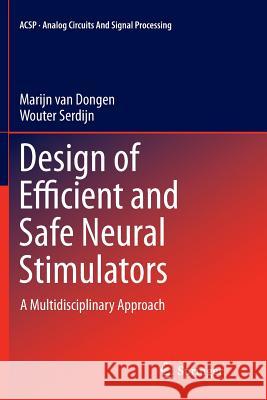Design of Efficient and Safe Neural Stimulators: A Multidisciplinary Approach » książka
topmenu
Design of Efficient and Safe Neural Stimulators: A Multidisciplinary Approach
ISBN-13: 9783319802787 / Angielski / Miękka / 2018 / 124 str.
Kategorie:
Kategorie BISAC:
Wydawca:
Springer
Seria wydawnicza:
Język:
Angielski
ISBN-13:
9783319802787
Rok wydania:
2018
Wydanie:
Softcover Repri
Ilość stron:
124
Waga:
0.20 kg
Wymiary:
23.39 x 15.6 x 0.76
Oprawa:
Miękka
Wolumenów:
01
Dodatkowe informacje:
Wydanie ilustrowane











